How to Sandwich a Quilt is part 3 of a six-part series on finishing a quilt. So far, we’ve covered types of batting and choosing fabrics for the back.
While many quilts are finished with free motion quilting on a longarm machine – and don’t require a basted sandwich – many are completed by hand or on a domestic machine.
Today, I’m step-by-stepping through basting the layers together – finished quilt top, batting and back.
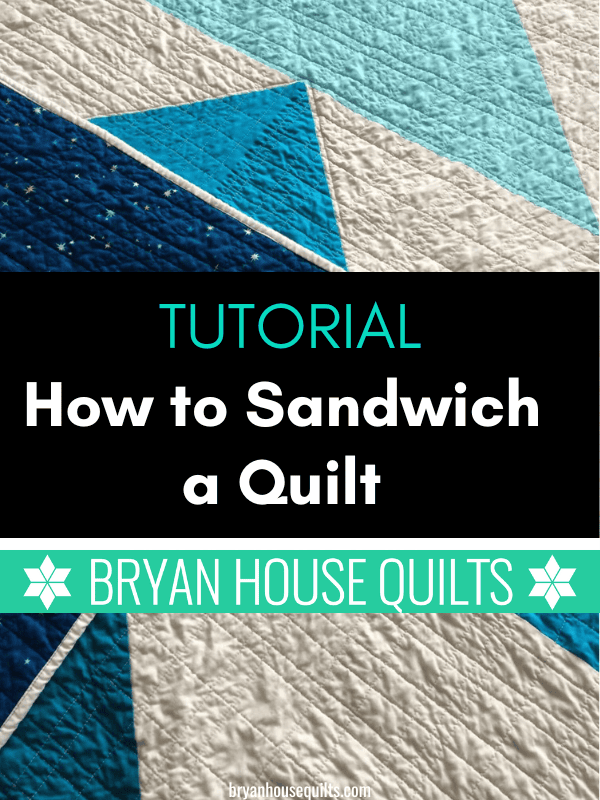
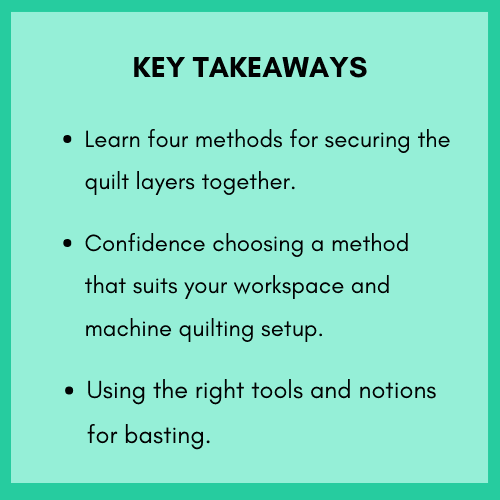
Finished Quilt, Happy Quilting
No longarm machine? Use your home sewing machine or quilt by hand. Many quilters do this and you can, too with a few supplies. Round up your quilt tops! You’ve got this.
- Learn about different methods for securing the quilt layers together.
- Feel confident about choosing a method that suits your workspace and your machine quilting setup.
- Learn about supplies and notions so you have the right tools.
What’s Inside the Sandwich?
Prepping your layers is the crucial step before your quilt is hand stitched or machine quilted.
The sandwich has three parts: quilt top, a middle batting layer and a back fabric layer.
The quilt front is the pretty part and the batting makes it warm and sturdy.
The backing gives your quilt a finished appearance and protects the batting from wear and tear.
Tips for Choosing Backing Fabrics and Batting
Choose the best batting and quilt fabric backing you can. These need to hold up from use and washing. Learn the finer details of choosing batting here and backing here.
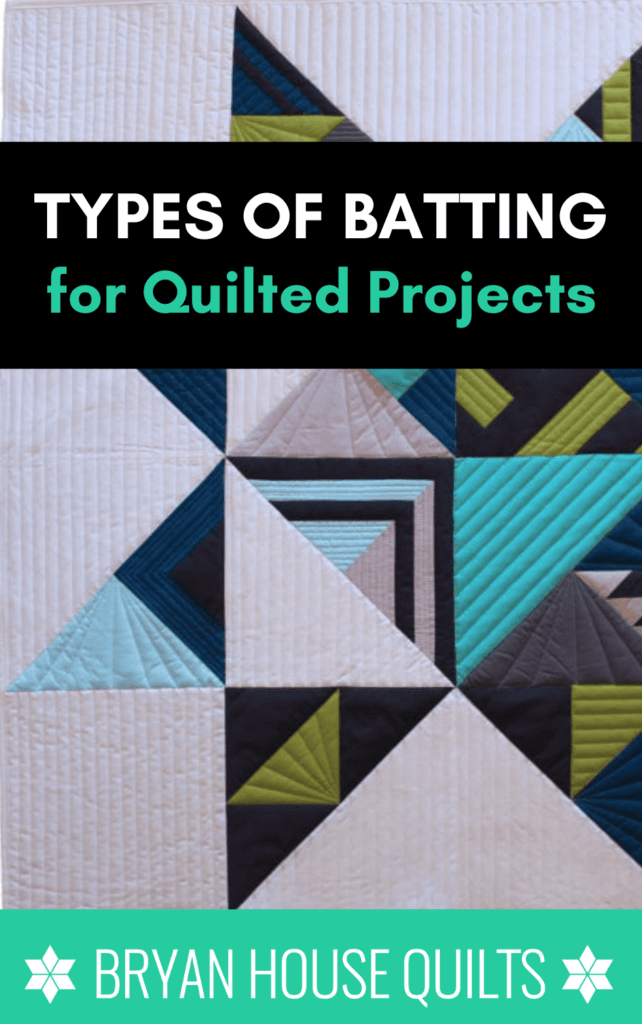
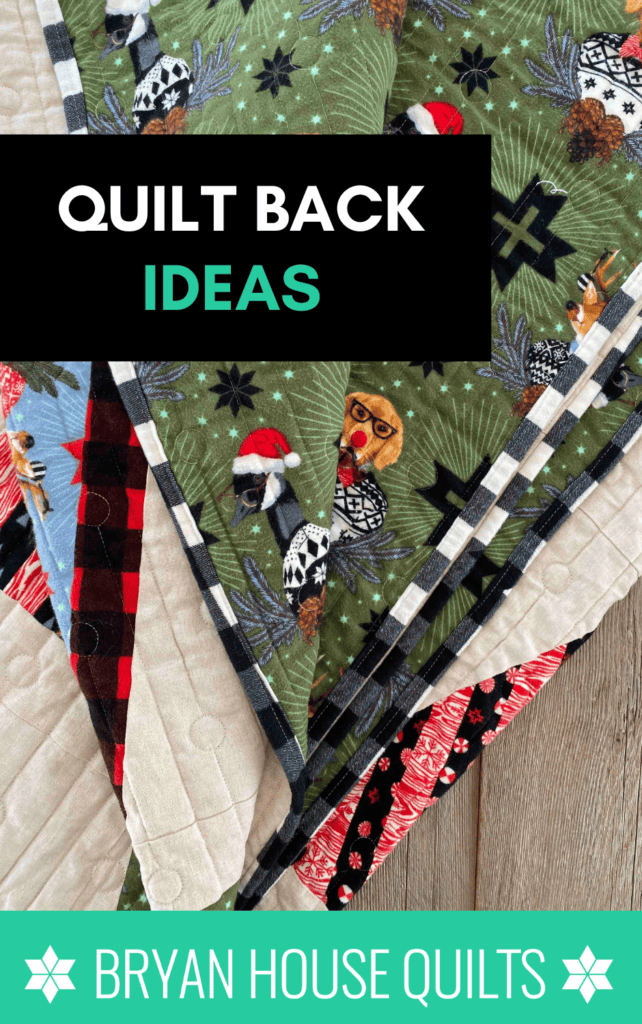
Pressing and Nesting the Seams on the Quilt Top
Pressing is an important part of the sewing and quilting process and impacts how “finished” a quilt looks. I don’t like sewing over lumps and bumps.
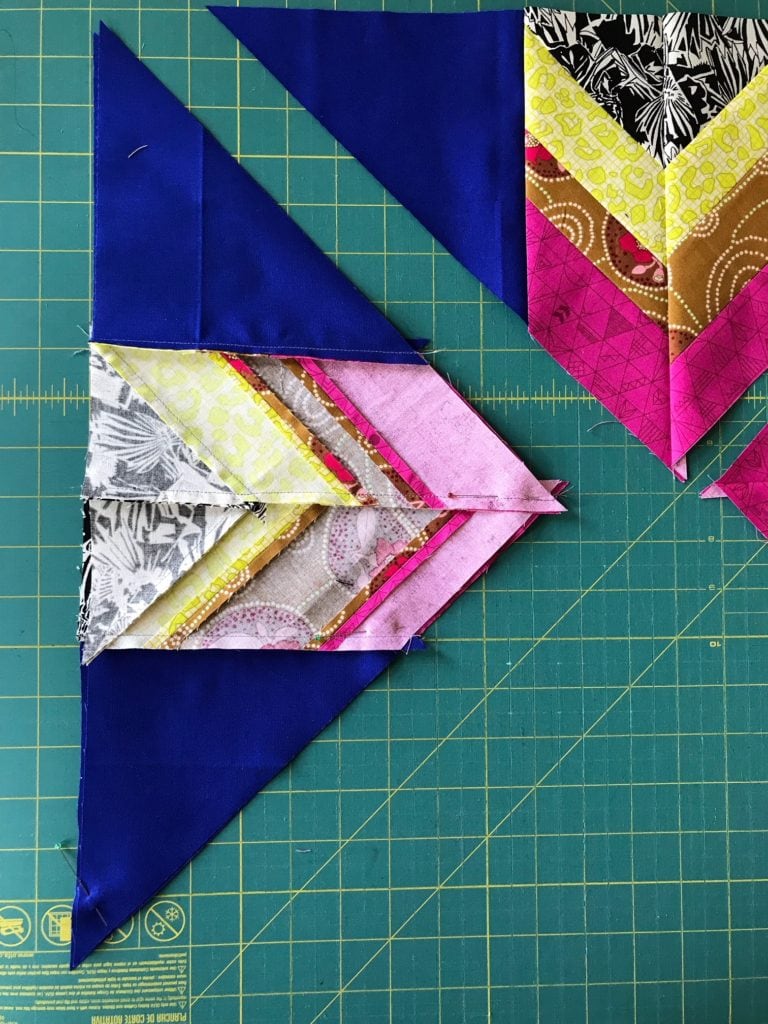
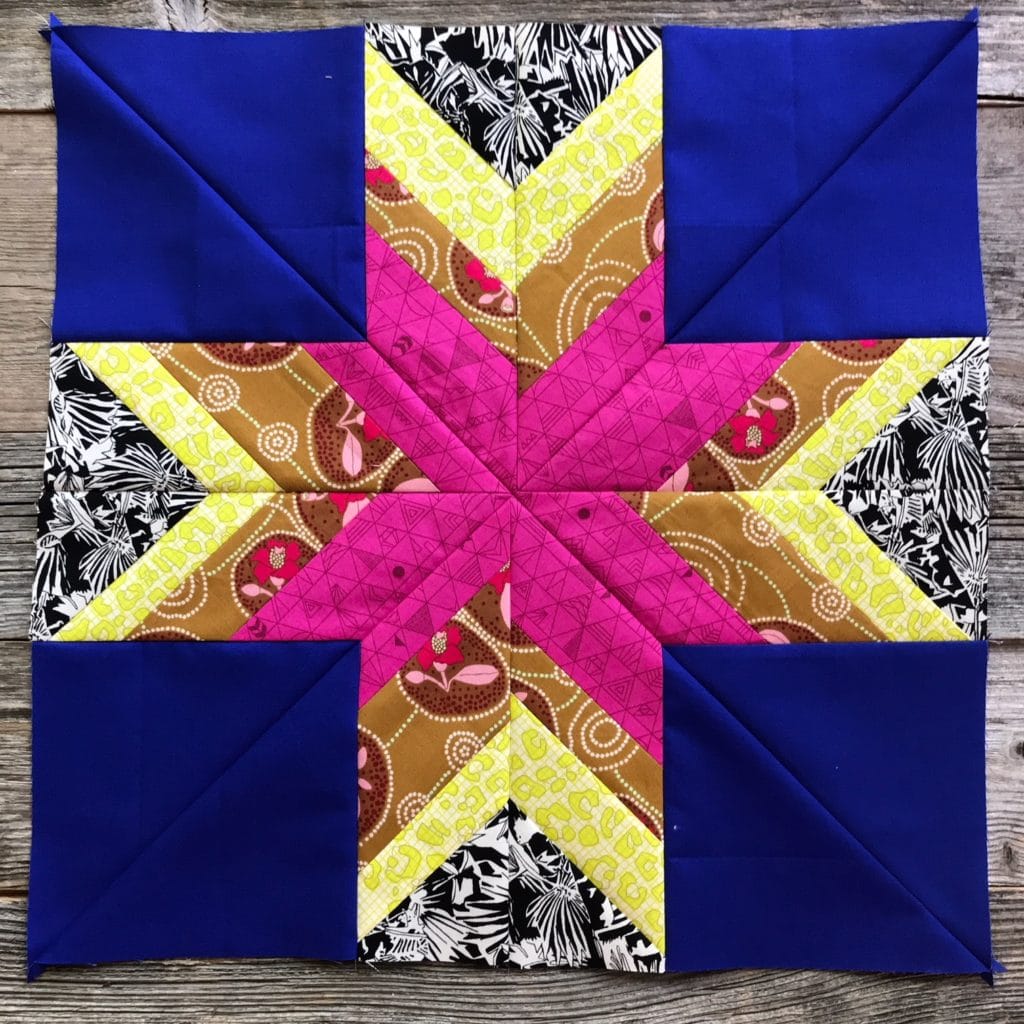
Before assembling your layers, press the seams to opposite sides where they meet other seams so they nest them together. Pressing them open reduces bulk, especially where pieces intersect – though you will still need to nest them at intersections. You need to sew close to or through the intersections when quilting the top.
Flip over, press and starch the right side of the quilt top thoroughly.
How to Make a Quilt Sandwich
Workspace
You need a clean flat surface – the larger the better. I have to move things around to make room – me and my piles!
Measuring and Cutting
TIP: The backing is always the largest piece of the sandwich.
- Batting is at least 4 inches wider than the top on each edge.
- The backing is cut 2-4 inches wider than the batting on each edge.
- Cut the quilt backing on the lengthwise grain (which doesn’t stretch) for the longer edges of your quilt, usually running top to bottom. This helps prevent waves and puckers while quilting the top. Prep is everything.
- Excess fabric is good insurance! It can always be cut off later.
When in doubt, go wide and long! You won’t come up short on fabric at the edges after quilting. The quilt layers are “taken up” and reduced by the amount of stitching and thickness.
Note: If you hire a longarm quilter, the quilt batting should be at least 4 inches wider than the quilt top on all sides, and then the quilt backing is at least 4 inches wider on all sides, too. This helps the quilter load the quilt onto the machine evenly with stability.
Measure your fabric twice, cut once!

Basting: Four Common Ways
There are four common ways to secure the layers:
- Pin basting with curved quilting pins,
- Fusible fleece/batting,
- Thread basting
- Temporary adhesive spray.
I’ll walk you through each method below. Also, I’ve linked to video tutorials that show you methods for spray basting and thread basting.
PIN BASTING WITH CURVED QUILT PINS
Use curved quilt pins s- they are sold with quilting notions. They are easier to open and close than regular safety pins – you’ll notice a big difference.

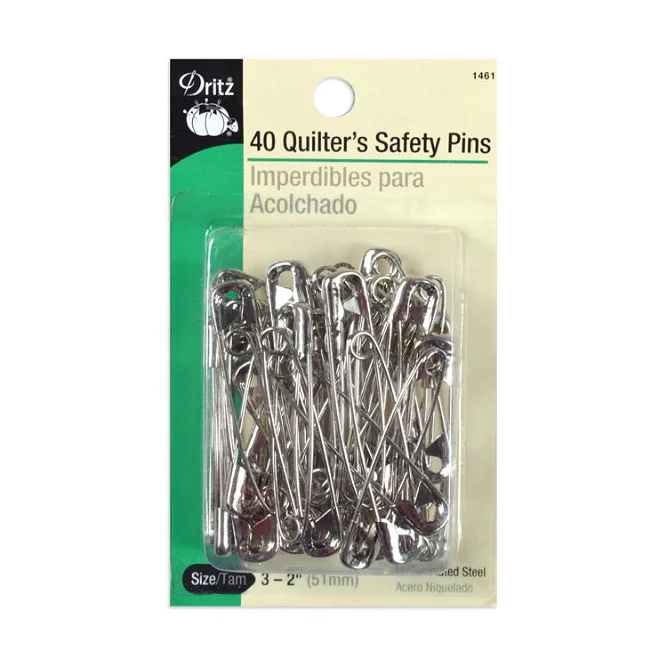
Smaller quilts (under 40 inches per side) work well with pins unless you’re a speedy thread baster and plan to quilt by hand.
Step 1: Lay the batting on a large table, hardwood floor or carpet. Lay the quilt front face up on top of it. Roll them up together from top to bottom. The quilt top should be on the inside of the roll.
Step 2: Lay your backing fabric right side facing down on a large table or clean floor, smoothing it out.
Step 3. Place painters tape on the corners and edges. Or place small weights on the backing fabric to prevent slipping and bunching. by putting sewing weights on the corners and sides. Any hefty items work – soup cans, etc.
Step 4: Carefully unroll the layers flat over the backing and smooth it out.
Step 5. Pin every 3-4 inches starting in the middle and working outward to the edges. Keep smoothing the layers flat with a light hand.
When you’re done pinning, turn the quilt sandwich over and check for missed spots.
Ta-da! You quilt sandwich is ready for machine quilting.
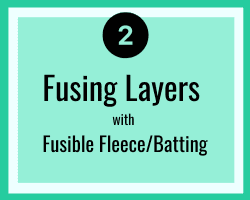
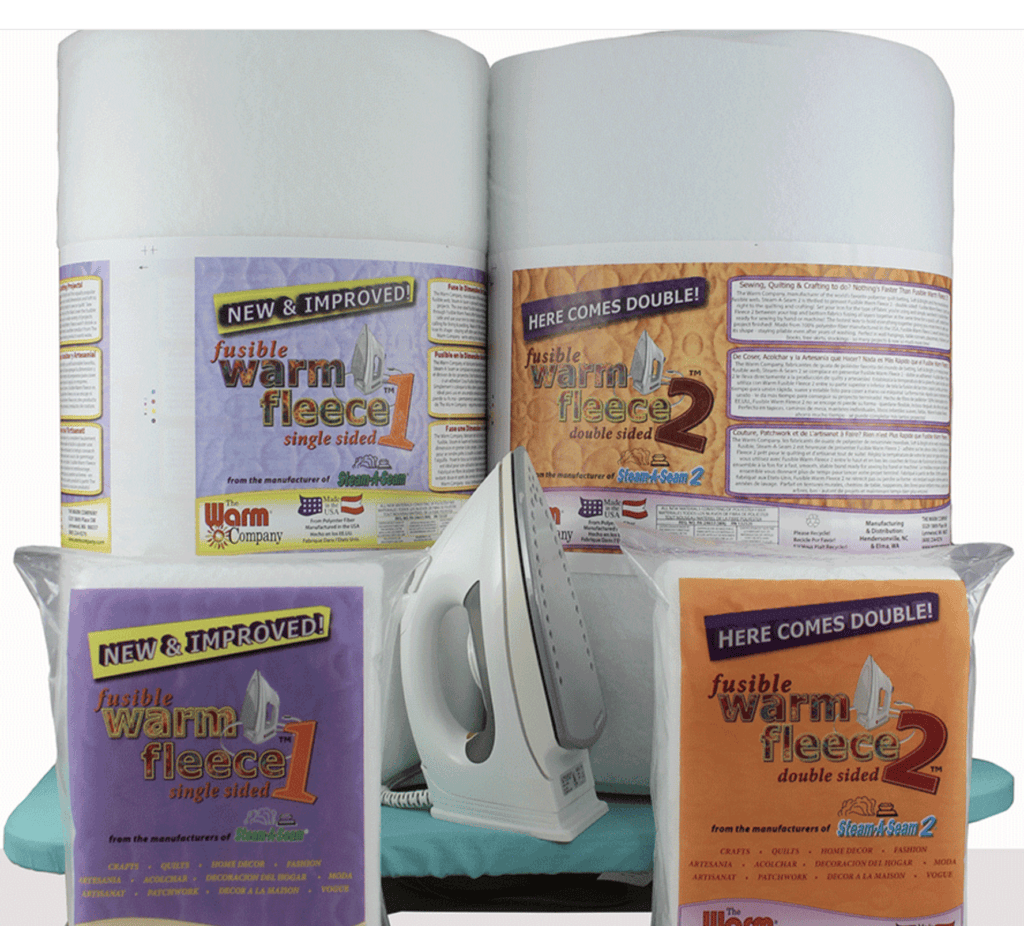
FUSING LAYERS
Double-sided fusible batting is a game changer for quilts, home decor, art quilts and accessories. Both sides are fusible, which is safer than using a basting spray (more on basting sprays below). And no safety pins in the way when machine quilting.
One side adheres to the wrong of the quilt top and the other side fuses to the backing. All the layers are fused together. I like how well it holds the sandwich together. Be prepared to spend more time fusing the layers together.
Fusible Warm Fleece 2 by the Warm Company comes in a 36 x 45 inch package, by the yard, or 45-inch x 20-foot rolls. It’s low loft and very sturdy. No need to worry about glue residue on the machine needle. Let the quilt cool down after “basting” before quilting. I’ve listed other brands below.

Single-sided is also available. Use single sided fusible with curved quilting pins to stabilize the top, then pin baste the back to it.
Fuse the adhesive side to the wrong side of the top. The fuzzy side will “stick” (sort of like felt) to the back while pinning.
Learn more about fusibles from these manufacturers:
- The Warm Company
- Pellon – Pellon® 985F Sandwich Fuse or all batting products here.
How to Baste with 2-Sided Fusible Batting
Step 1: For small quilts under 40 inches, lay a long sheet of parchment paper over your ironing board or a long pressing cloth. Large Goddess Sheets work well, too. Pin or clamp them to the surface.
For larger quilts, lay an old sheet on a large cutting table or clean floor. For extra protection, place old towels on the surface first.
Hack: I like to use spring clamps to tightly hold any layers on my cutting table.
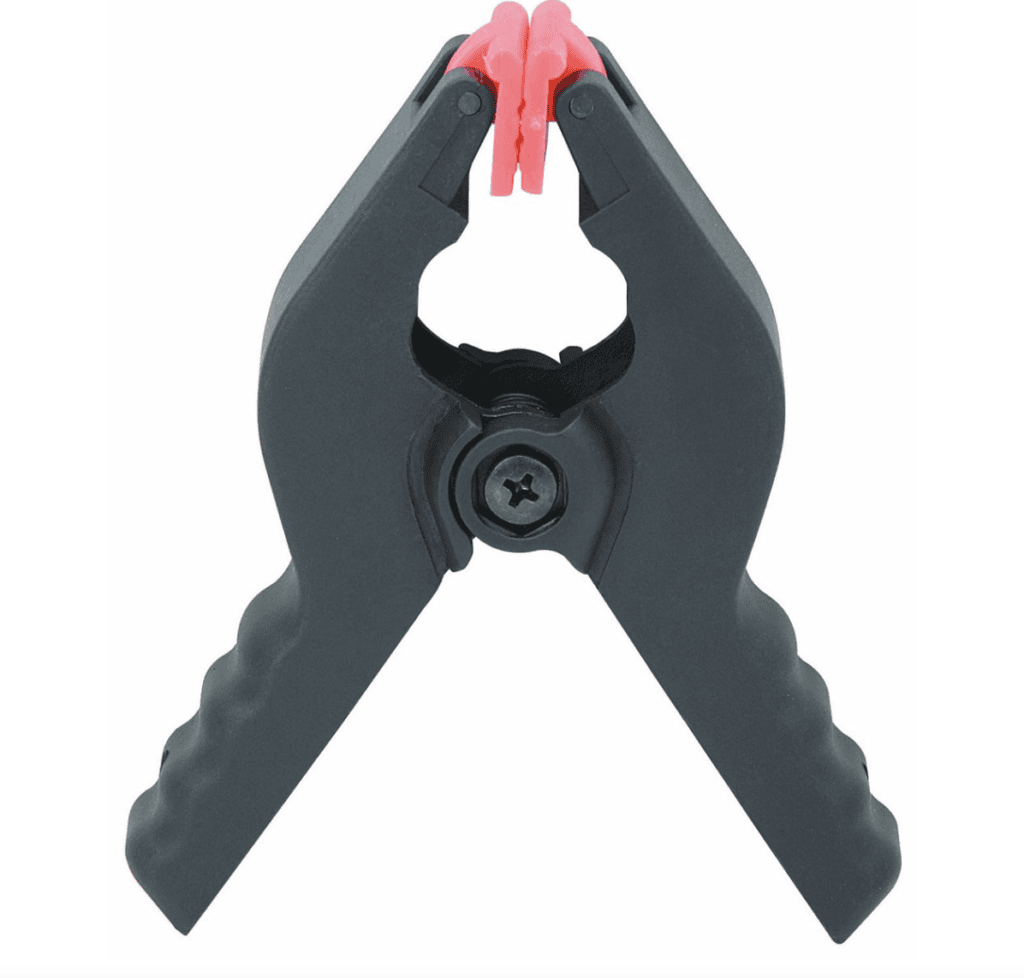
Step 2: Lay the batting over the paper or sheet. I have a cordless 360 Panasonic iron that’s perfect for using on a design wall, floor and cutting table.

Step 3: Place the backing on top of the batting then smooth out the wrinkles.
Step 4: Using an up-and-down motion, press your iron onto the fabric for no more than 5 seconds to lightly adhere them together. Work out from the center of the backing.
Step 5: Flip backing/batting over, and lay the quilt top with the wrong side facing the batting. Now press the top onto the batting using an up-and-down motion for 8 to 10 seconds. If your slides like an ice skater, hello bubbles and wrinkles. Go for smooth!
Step 6: Flip it over with the backing face up. Give it a good press!
TA-DA! TA-DONE!

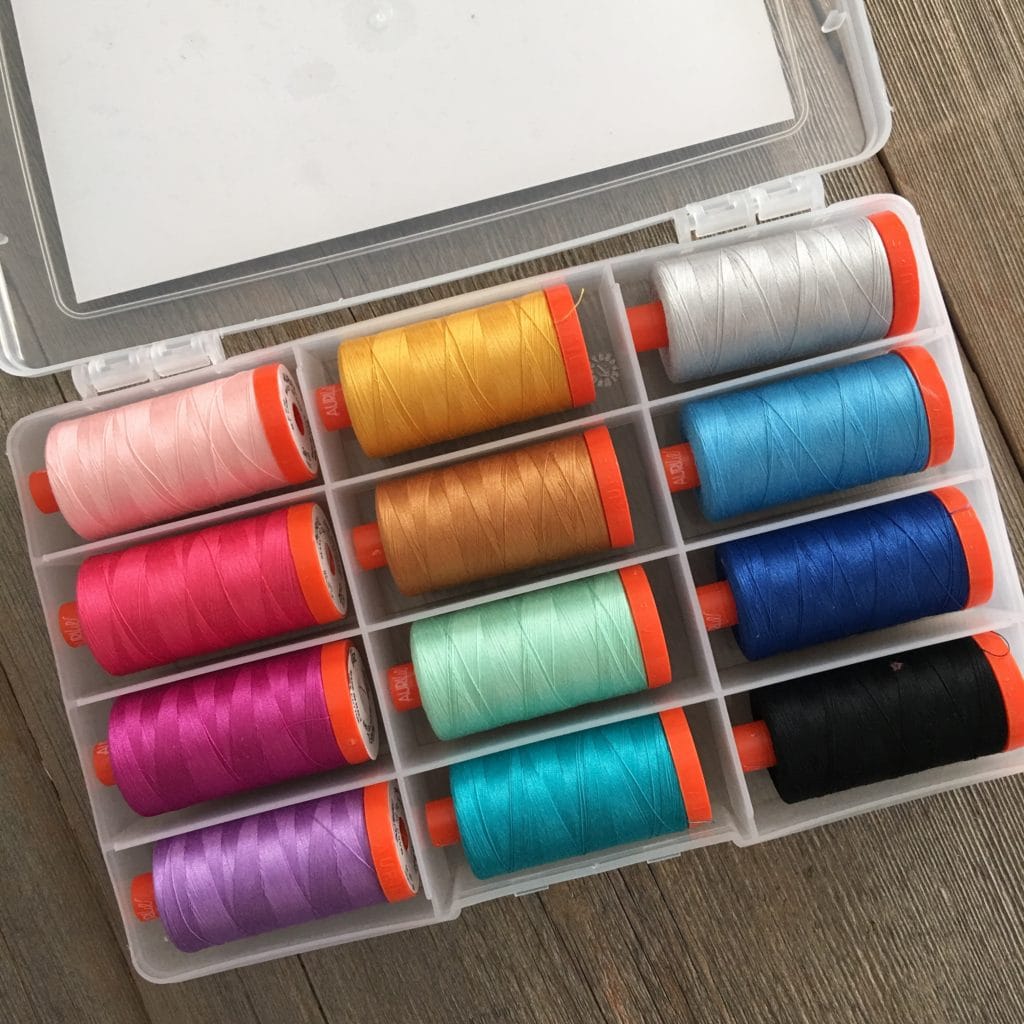
THREAD BASTING to sandwich A QUILT
Hand quilters often thread baste layers together with long stitches in one large spiral pattern. Stitching usually takes longer than other techniques. If you love to hand quilt, this is in your wheelhouse.
Choose a contrasting thread from the quilt top colors so it’s easy to see.
Here is an excellent video tutorial on thread basting a large quilt by Patchwork and Poodles. She has a bird’s eye view of the whole process. Love it!
Thread basting is also done on longarm machines. I tried a great idea (that actually worked, ha!) to baste my Pickledish quilt. I asked a friend to sew a loopy stipple pattern with soluble thread on her longarm.
When I finished sewing, the threads dissolved in the washer. It worked so well for a hand quilted project. Fast and easy.
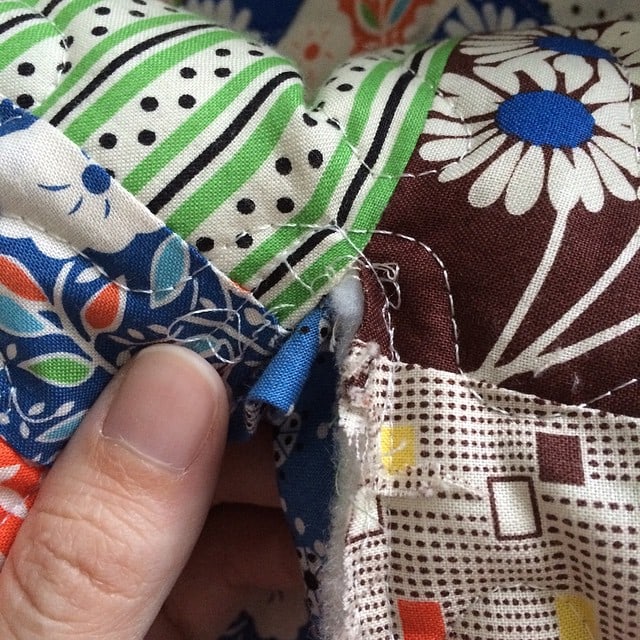
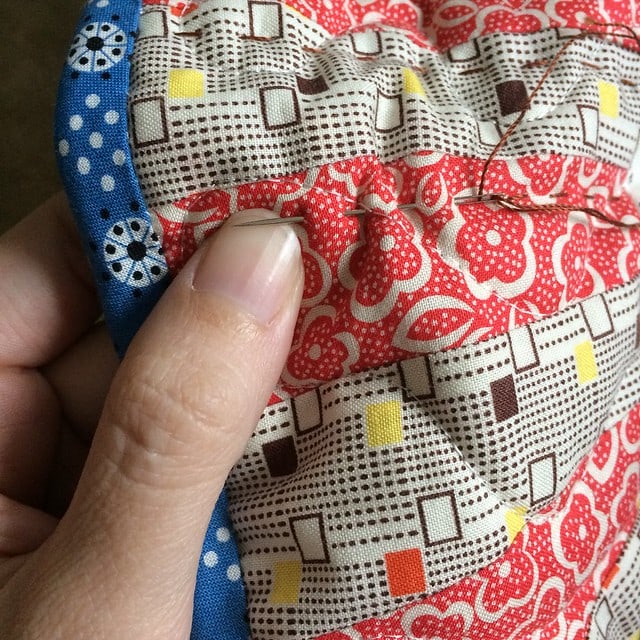
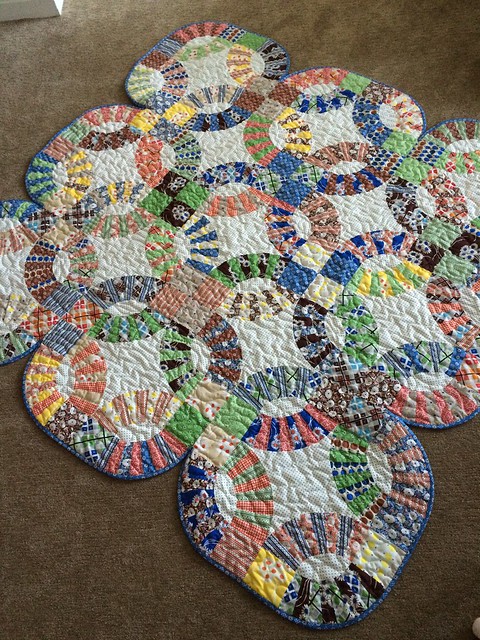
SPRAY BASTING to sandwich a quilt

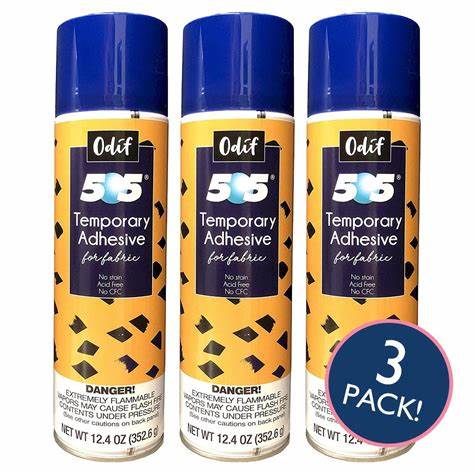
How to Use Temporary Adhesive Spray to Sandwich a Quilt
Basting spray fumes are toxic so manufacturers recommends wearing a ventilator mask and spraying in a well-ventilated area or outdoors. I’m linking to Christa Watson’s video on YouTube on spray basting quilts because she has it down!
Final Steps Before You Start Quilting
Before you start quilting, make sure your top and back are wrinkle free. The back of the quilt is a common offender.
Fused: Wrinkles should be smoothed out and fused again. Fused quilt layers that are still warm will separate more easily. You can fix a section instead of the whole quilt, as long as you can work those wrinkles out. Relief!
Add a little heat from the iron, and gently slide a thin metal ruler (or a wooden yardstick) between the layers to release it. Smooth out the fabric. Press to secure the layers.
Thread basted: Well, darn. You will need to remove some of the stitches and sew again. Pin basting will stop the parts from shifting. Add painter’s tape at the corners and sides if you have to restitch a large portion. Go slowly and continue to smooth gently as you sew.
Temporary adhesive spray: Luckily, the spray stays moist for days. If you have large wrinkles, divide the quilt into sections so you don’t have to start completely over. Smooth each part again and reattach.
Many quilters sew a 1/2 seam around the perimeter of the quilt with a longer stitch length (3mm).
Finishing this stage is a long process! And so worth every minute you put into it.
Now you know how to sandwich a quilt. Onward!
What’s Coming Up Next
In the next 3 weeks, I’ll share my go-to machine quilting methods: straight lines with a walking foot, free motion quilting and hand quilting. To finish it off, I’ll share my fool-proof method for sewing the binding onto quilts and other methods you need to know.
MAKE A MODERN TRIANGLE IN MY FREE “Outshine” CLASS
Don’t miss my free tutorial and pattern featuring a versatile modern triangle block called Outshine. Make your first block and turn a bunch into a colorful stars quilt.
Click here to take the free triangle class.
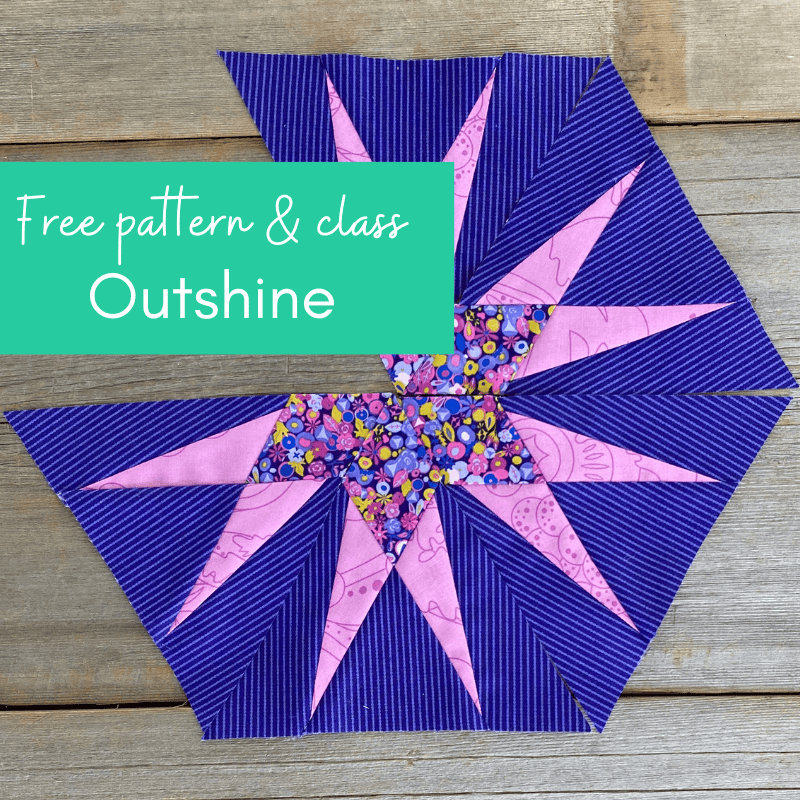

I have used coil-less safety pins so the fabric doesn’t get caught and snag in the coils of regular safety pins, but my all-best method is thread basting. It’s way more accurate and does not get in the way of intricate quilting.
Thanks for the refresher. I haven’t sandwiched quilts in a few years. I had forgotten what a time consuming pain it is. Thanks.